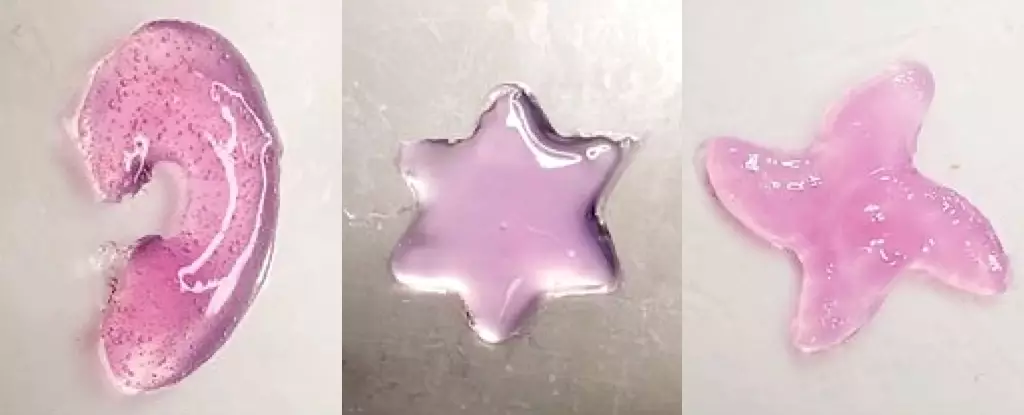In the realm of biomedical engineering, groundbreaking advancements continue to redefine what is medically possible. A notable development emerging from the California Institute of Technology (Caltech) showcases a revolutionary technique known as Deep Tissue In Vivo Sound Printing (DISP). This innovative method allows scientists to 3D print materials directly within the body using controlled ultrasound waves. As the medical community grapples with how best to deliver treatments, this technology promises far-reaching implications—for drug delivery, tissue repair, and perhaps even real-time diagnostics.
A Multifunctional Approach to Bioink
At the heart of the DISP technique lies a specialized bioink, a carefully formulated mixture that can take on various roles, depending extensively on the treatment it is intended to provide. This bioink consists primarily of polymer chains combined with crosslinking agents, which facilitate the formation of a hydrogel structure upon administration. The critical innovation here involves encapsulating these crosslinking agents within lipid-based nanoparticles called liposomes. This clever design prevents premature hydrogel formation, allowing the bioink to remain liquid until subjected to ultrasound stimulation—a unique thermal activation process.
The ultrasound waves penetrate deep into bodily tissues, activating the crosslinking agents by inducing specific reactions when the temperature reaches approximately 41.7 °C (107.1 °F). The seamless combination of biotechnology and engineering comes to fruition as researchers utilize this technique not solely for immediate applications but for the potential to revolutionize the scope of minimally invasive treatments.
Precision in Action: The Benefits of Ultrasound Technology
Unlike previous methodologies that relied on infrared light for activation—limited by its inability to penetrate deeper tissues—ultrasound technology expands the horizons of how and where these materials can be applied within the body. The research team at Caltech reported that by fine-tuning the ultrasound beam, they could 3D print intricate structures ranging from geometric shapes to more complex forms, such as stars and teardrops, within the body itself. This leap into precision medicine enables far more customized interventions, allowing for tailored solutions based on individual patient needs and conditions.
The use of ultrasound miniatures the risk of collateral damage to surrounding tissues, promoting improved biocompatibility. This level of sophistication opens avenues for applications in reconstructive surgery, wound healing, and even real-time monitoring, effectively bridging gaps in patient care that previously were difficult to address.
Pioneering New Frontiers in Drug Delivery
Perhaps the most exciting aspect of the DISP technique involves its potential for individualized drug delivery. In experiments involving 3D cell cultures with bladder cancer, researchers successfully incorporated the chemotherapy drug doxorubicin into the bioink, which was then transformed into a hydrogel. This method resulted in a controlled release of the medication over several days, yielding a higher efficacy in killing cancer cells compared to traditional injection methods.
This tailored approach signifies a paradigm shift from conventional drug delivery systems, wherein drugs are often administered in bulk, potentially leading to significant side effects and suboptimal outcomes. DISP offers a pathway to deliver treatments more precisely at the site of interest, maximizing therapeutic effects while minimizing adverse reactions.
Future Perspectives and Ethical Considerations
While this promising technology is still in its nascent stages, and the challenge of advancing from animal studies to human applications remains—scientists are optimistic about DISP’s potential impacts. The next steps involve larger animal trials before moving into human testing, an endeavor that brings forth not only scientific challenges but also ethical considerations surrounding patient safety and consent.
Moreover, this type of innovative technology speaks to broader discussions about the direction of medical advancements. As we stand at the brink of personalized medicine, we must consistently weigh the benefits against the ethical implications, ensuring that as we push boundaries in biomedical sciences, we tread carefully and consider the human experience above all else.
The emergence of methods like DISP is not merely a triumph of scientific prowess; it is a beacon of hope for individuals facing life-altering health challenges, offering the prospect of healing from within. The convergence of biology and technology heralds a new era where the fabric of medical treatments is woven directly into the anatomy of human life, redefining recovery and wellness in profound ways.


Leave a Reply